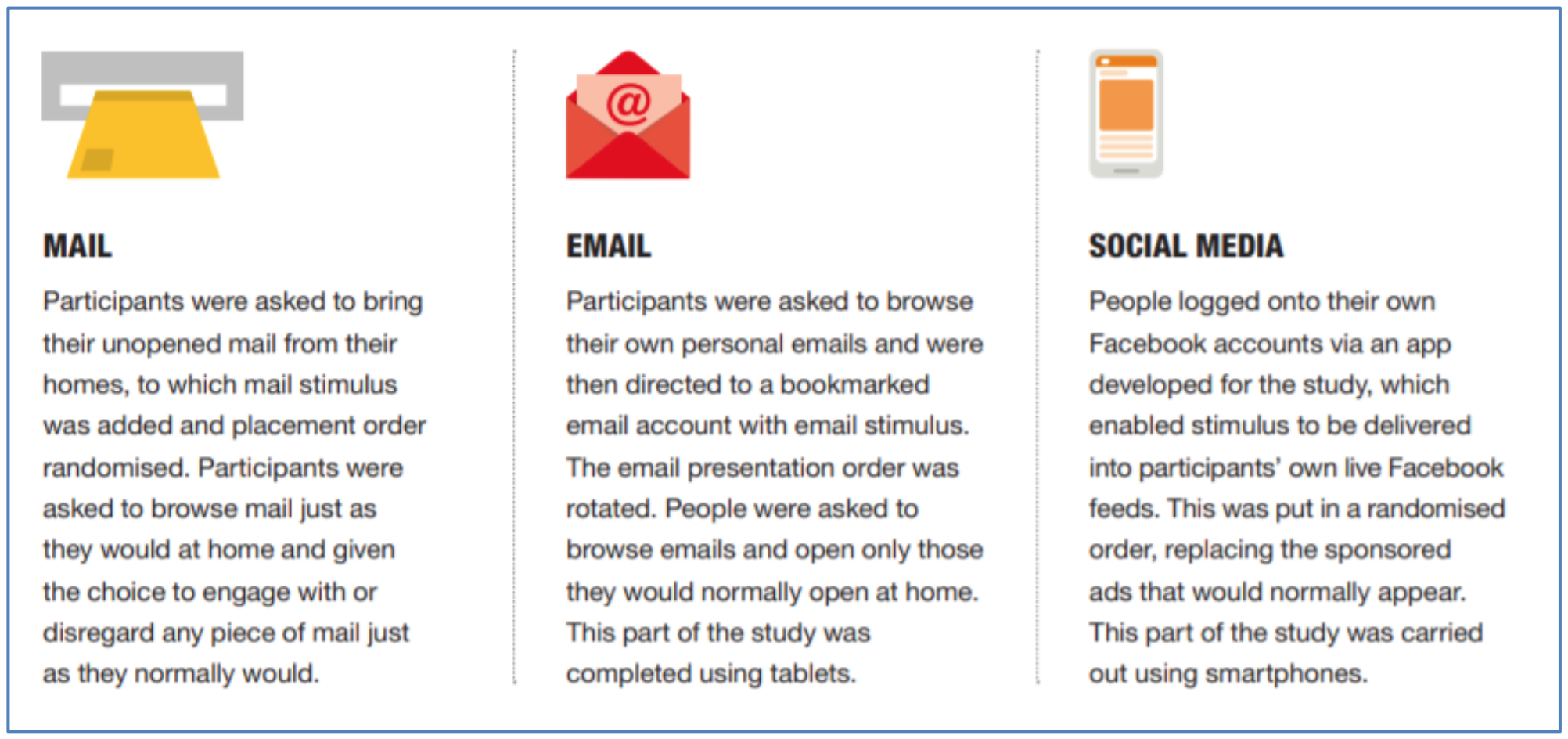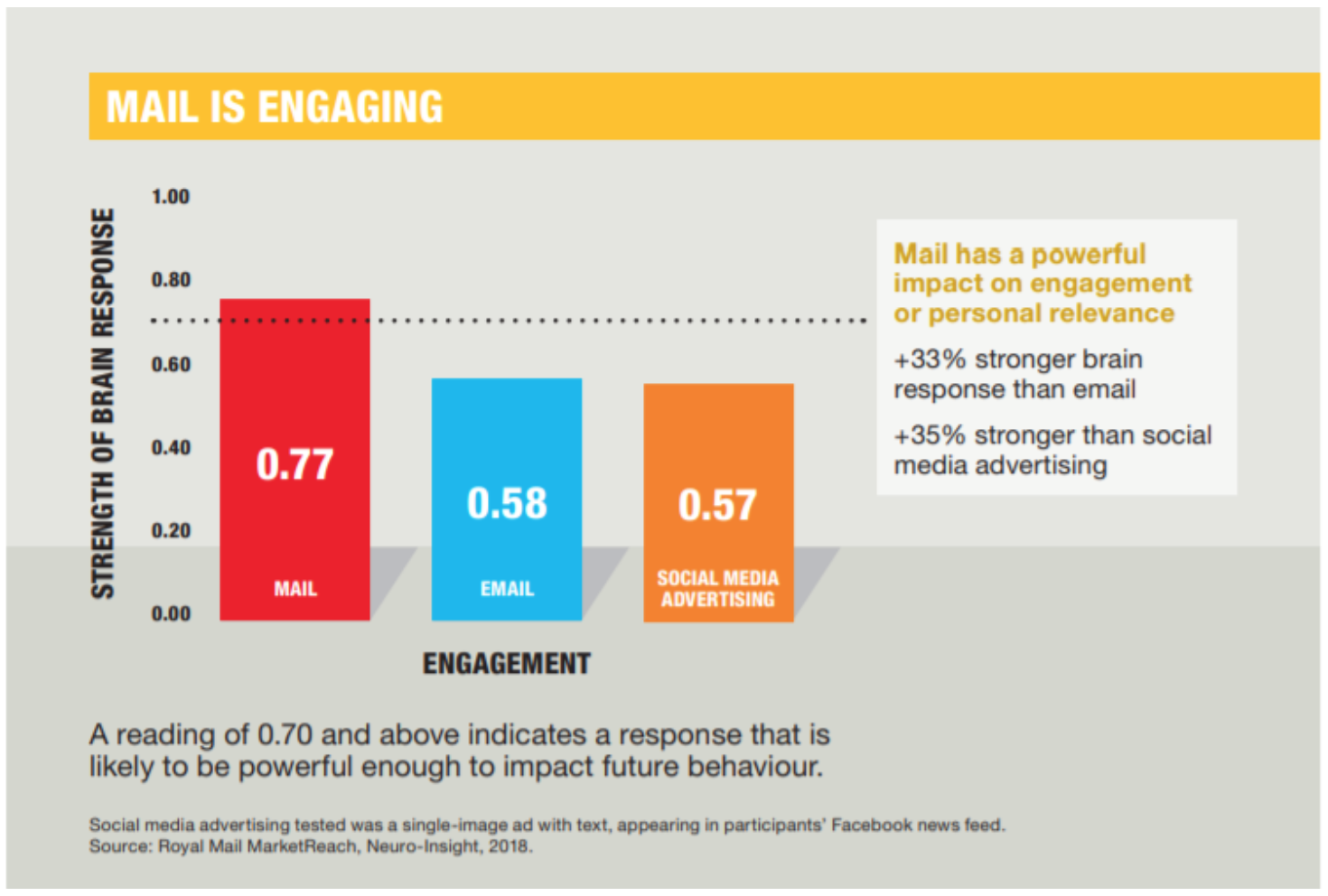For marketers, it truly is the best of times and the worst of times, a position made clear by Royal Mail’s new report titled “Why Mail Cuts Through.”
“It’s never been easier for marketers to target an audience,” the report states. “The rise of digital has created ample opportunities to reach consumers in real-time.
“Conversely, it’s also never been harder to make a message cut through,” the report continues. “With the proliferation of digital touchpoints, on top of traditional media channels, people are exposed to thousands of brand messages a day. So it’s easy for a single marketing message to get lost in all the noise.”
So what does cut through? Royal Mail commissioned neuroscientific research in an attempt to measure the subconscious impact of mail, email and social media on consumers.

Image source: MarketReach.co.uk
The results show that mail activates the areas in our brains responsible for long-term memory much more than email or social media ads do. In other words, mail makes a more lasting impression:

Image source: MarketReach.co.uk
It’s more than just making that impression though. The report also notes that mail is more engaging than email or social media.
“If something feels personally relevant, our brains are more likely to put it into memory,” notes the report. “So engagement, as measured in our neuroscience study, is important because it drives memory encoding. Engagement indicates how involved people are with the stimulus they are experiencing and is generally triggered by material that is of personal relevance.”

Image source: MarketReach.co.uk
These findings aren’t exactly surprising; previous research has shown that consumers engage more deeply and remember longer in print. What is new is how the report talks about consumers, their brains, and the idea of the “brand room.”
“For everything we encounter over our lifetime, including people, places, ideas and brands, our brain builds a corresponding neural network of associations that grow over time as we learn more about or interact more with the subjects in question,” says the report. “We can think of these networks as being like rooms in the brain, each representing a particular thing.
“The ‘room’ of a brand we’ve only just heard about starts out bare and has no existing associations. But subsequent encounters help to furnish and distinguish the room from others,” the report continues. “Whilst some brands will never be important to us and always live in sparsely decorated rooms, those that we engage with will become more richly populated with associations. These can be positive or negative depending on the nature of our brand experiences, so if we have a lot of great experiences with a brand we’ll accumulate a lot of positive associations in our minds.”
Print mail, it turns out, has a powerful impact on “furnishing” the brand room and flipping the switch to our memory of the brand. And it works as a tangible driver of action.
“For example, in consumer research we regularly find people putting mail somewhere visible in their home as a reminder to act. Or taking it out with them to act on (64% say they do this*), such as to redeem an offer, to refer to when buying something, or to share it with others.”
Part of print’s impact likely has to do with the reality of how print works: When you’re reading print, that’s all you’re doing. When you’re engaging in digital, you may have dozens of tabs, apps and notifications open at the same time.
This reality, plus the impact of print on our “brand rooms” in our brands, makes print a solid driver of action, something we return to again and again before eventually discarding it. Whereas social ads or emails are gone with one click, often even before the consumer engages with them.
What does all this mean to modern marketers? Mail adds “a unique and tangible dimension to the media mix. It is tactile, personal and reaches people in their homes.”
People respond strongly to mail, both in their feelings about the brand and their actual behaviors. When you’re ready to make this the best of times for your brand, you’re ready to strategically include print in your marketing plans.
